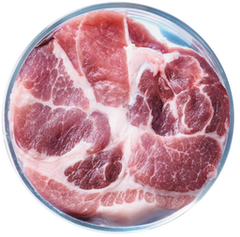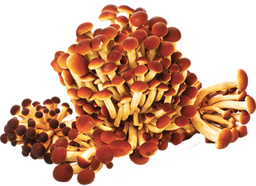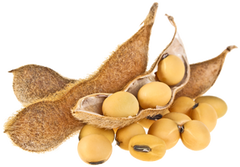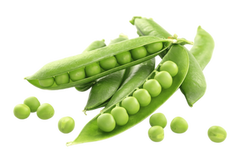Panel discussion on...
Alternative proteins
A great step toward transforming our food systems from a health and sustainability perspective
Consumers are more and more conscious about the food they eat. The nutritional value as well as the environmental impact of their food choices are factors driving the demand for healthier and more sustainable food products.
The protein market has been transformed over the last years, with a growing interest in non-animal proteins. In addition to the health issues associated with animal-derived proteins (meat, dairy, egg-products) there is a detrimental environmental impact caused by their production systems: greenhouse gas emissions, land usage, water resources, loss of biodiversity and more (1,2). Disrupting technologies are needed to improve the efficiency of the food production systems while reducing the negative consequences of agriculture. Transitioning to alternative proteins is therefore a way to address the climate crisis while contributing to healthier and more balanced diets.
Plant-based proteins were the first ones to reach the market but today other proteins are available options: microbial proteins are produced through fermentation of microorganisms (microalgae, fungi, yeast, or bacteria); cellular-based proteins are obtained by growing animal cells in a bioreactor, through a technology called cellular agriculture or cultivated meat (or dairy or fish); insects proteins are obtained through edible insect farming.
How can the lack of regulation and standardization in the alternative protein industry be addressed to promote the growth of the market?
Alternative proteins, just as other innovative food ingredients, must undergo a safety assessment to be legally placed on the market. This is generally achieved through scientific procedures and summarized in a regulatory dossier, which addresses all possible concerns related to the safety for the human health or the environment. Although a harmonized framework doesn’t exist, most of the Food Agencies across the world have equivalent systems based on the same scientific and risk-based principles. That is the case for the Generally Recognized as Safe (GRAS) in the US or the Novel Food regulation in the EU. The complexity of the safety assessment may vary depending on different factors. In the case of cultivated meat, the technology is so new that the regulatory pathway to market is unclear in some countries, or the existing procedures are not fully adapted. In the EU, cultivated animal proteins fall under the Novel Food regulation, although no product has been approved yet. Singapore was the first Agency to approve a cultivated meat product in 2022, and that was a milestone in the cell-based sector. Other approvals have come since, such as a recent cultivated-chicken approval by FDA. Regulatory approvals are coming progressively and the pathway to market is more and more straightforward, so we cannot speak about a lack of regulation anymore. The struggle is more the lack of consensus regarding denomination and labelling, which poses a real problem for consumers who can’t always identify the alternative protein in the purchased products. Legal battles around terminology -the use of the “sausage” or “steak” by the plant-based counterparts is allowed or banned depending on the jurisdictions- results in a continuously changing landscape that doesn’t facilitate consumers understanding. Moreover, the coexistence of different labels in the front- of- pack labelling, each of them related to different aspects - nutrition (nutri-score), environment (eco-labelling), organic production (organic logo)- increases the complexity of the message delivered to consumers: one product can be interesting from a nutritional perspective but may have a heavy environmental footprint because of their production system.
Are plant proteins more sustainable than dairy, fish, or meat proteins and how to accurately measure this?
Alternative proteins can have a major impact on at least 5 of the United Nations’ Sustainable Development Goals: Zero hunger; Good health and Wellbeing; Responsible consumption and production; Climate Action; and Life on Land. Most of alternative proteins are more sustainable in terms of emissions, water, and land use than beef proteins (3). Microbial proteins have received increased attention from research and institutions to tackle climate change (4) as they have low arable land requirements and do not directly compete with crop-based food commodities. Microbial proteins are obtained through fermentation technology from microorganisms that grow fast under controlled conditions, allowing the obtention of a considerable quantity of protein in a fairly short time. Their production is efficient and independent of the season. One way to measure and compare different proteins in the framework of sustainability is by using Life Cycle Assessment (LCA) studies, an internationally standardized methodology which calculates the carbon footprint of a given product and its resulting global warming potential. A recent LCA study comparing the carbon footprint of yeast protein to beef, pork, soy, pea, and fava protein showed that yeast protein has low in CO2 emissions and land (5). Moreover, yeast protein is produced in a way that applies the circular economy concept: beet molasses, a byproduct of the sugar industry is used as a substrate for yeast fermentation; and one of the byproducts of fermentation is vinasses, which is used as natural fertilizer for sugar beetroots.
How can we effectively address remaining consumer concerns regarding alternative proteins?
the regulatory approval clears all doubts about the safety of the alternative protein, some concerns remain about the environmental impact of products and the legitimacy and harmonization of labelling schemes. The different messages existing in the front-of-pack product labelling, can create unfair or confusing messages. For instance, claims about plastic free only relate to the packaging, but not to the product itself; the organic logo ensures a production according to organic agriculture; the vegan label attests the absence of animal ingredients; the eco-label identifies a product less harmful to the environment. Those logos not always correlate with a good nutritional composition or can be used on ultra-processed foods, which are unhealthy. How can consumers make the right purchasing decisions by integrating all those aspects? There are improvements to make on the areas of product environmental carbon footprint methodologies and harmonization of the labelling schemes. More efforts will also have to be deployed on education and communication to normalize alternative proteins in consumers’ diets. A holistic approach, considering health, nutrition, and sustainability, would be wise. In that respect, nutritional yeast protein may be the best option on different aspects: food security (efficient replication through fermentation), food safety (i.e., derived from Saccharomyces cerevisiae, aka Baker’s yeast, used for centuries as a safe microorganism), low environmental footprint compared to other proteins and a good nutritional profile (digestibility and complete protein containing all essential amino acids).
Panelists
References and notes
- United Nations Environment Program (2020). Healthy Food for All: How do We Make Healthy Diets Accessible and Affordable for All? A Framework for Action - Perspectives Issue No. 39.
- Lamb, A., Green, R., et.al. (2016). The potential for land sparing to offset greenhouse gas emissions from agriculture. Nature Climate Change, 6(5), pp.488-492.
- Witte, B. et al. (2021). Food for Thought: The Protein Transformation. BCG - Blue horizon.
- European Parliamentary Research Service (2022). What if microbial protein could help reverse climate change?
- Martin, C. (2022). Alternative Proteins: Sustainability and regulatory aspects. Agro FOOD Industry Hi- Tech. Vol 33 (2).



















